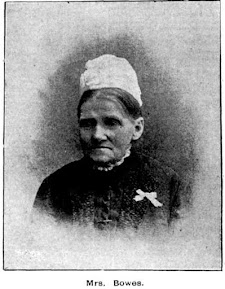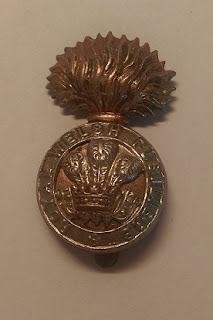A life and so many others cut short
We are soon to commemorate
the 108th anniversary of the Battle of Fromelles on the 19th of July and I wish to pay
homage to all those that lost their lives. Today I will honour a local young
man who displayed great courage, indicative of the thousands who took part.
THOMAS PATRICK ELLIOTT
Thomas was the eldest son of
eleven children of Thomas Murray Elliott and his wife Mary Ellen and born in
January 1894. All the sons were encouraged to have military service and Thomas
enrolled as a Cadet at the Royal Military College in Duntroon in 1912.
Thomas's potential impressed his superiors, and he was destined to succeed but
his academic and sporting achievements were cut short due to the start of WW1.
He enlisted on the 3rd of November 1914, at which time the family were living
in Lidcombe very close to the cemetery and embarked with the 2nd contingent on
the 20th of December that year as a temporary Captain. He fought at Gallipoli
with the 7th Light Horse and was evacuated to Malta in September 1915 with
severe enteritis. By June 1916 at the young age of 22 years he was promoted to
Major and dispatched to the Western
Front to join "Pompey" Elliott's (no relation) 15th Brigade.
"Pompey" Elliott
had become aware of the attack to be fought at Fromelles and could see it was a
hopeless mission. He tried valiantly to transfer Thomas away from the front
line, but the young Major believed he could only lead his men with his presence
at the front. On the 19th of July in the second wave Thomas led his men out of the
trenches.
Final line "Don't worry about me, I'll be alright" - AWM
Eyewitness reports state
that he was observed falling to the ground and desperately trying to remove his
tunic as he attempted to regain his footing, but he fell back down where he
remained curled up bleeding profusely. After the fighting ceased, he was initially
reported as missing but that was upgraded on the 13th of August 1916 to
"Killed in Action" 19th July 1916. Although his body was seen near
the first German trenches it was never recovered and believed to have been
taken by the Germans and buried behind their lines.
Pompey Elliott later wrote
of Thomas that "his early death thus unfortunately terminated what
promised to be an exceptionally brilliant career ...and it can be said... that his
Officer's death is the greatest single loss the Brigade has suffered since its
formation..." Thomas is commemorated at VC Corner Australian Cemetery
Memorial Fromelles.
Mary Elliott refused to
accept that her son was dead and wrote many letters requesting information
requiring a full definition of what the word "missing" meant. In her
grief she turned to drink and became a public nuisance, being brought to the
courts to answer charges of violent and threatening behaviour. In 1918 she was
committed to Callan Park Mental Hospital and was transferred to Parramatta
Mental Hospital where she died from the effects of the Spanish Influenza strain in June 1919. She is buried in the
Catholic section of Rookwood.
From propaganda at the time,
Fromelles was regarded as a victory with over 200 prisoners taken. It was many
months before the true nature of the attack became known.
The British General Major
Richard Haking who engineered the battle was noted to have said that the
Australian troops were not sufficiently trained and that there was ample
artillery to have had better results; in return Australian troops called him a "butcher".
Brigadier General Harold
"Pompey" Elliott continued to lead troops in the Western Front with
successes at the Battle of Polygen Wood in September 1917 and at Villiers-Bretonneux in 1918. Upon his return
Elliott took up a political career and worked tirelessly for returned
servicemen. His internal battle scars eventually took their toll and in 1931 he
committed suicide whilst an inpatient at the hospital where he had been
admitted after making an attempt to gas himself at his nearby house.
Besides Thomas, the Elliott
family also sent three of their sons to the battlefields of WW1. Norman Pascoe
enrolled in December 1915, after spending four years in the Cadets and
proceeded to France in September 1916, he endured severe trench foot a result
of constantly wet feet from the trenches. In August 1918, he received a gunshot
injury to his hand and that October endured a gunshot wound to the abdomen and
thigh. Upon return to Australia, Pulmonary Tuberculosis was detected in June 1919
and he died on the 7th November 1919 in Randwick Military Hospital. He is
buried next to his parents at Rookwood and a CWGC headstone marks his plot.
Robert Joseph enlisted in
May 1915 after stating on his enlistment papers of having spent three years
with the St Georges Rifle Regiment. He saw action in Gallipoli before heading
to France. Robert received a severe gunshot wound to his right hand and was
invalided out of service, returning to Australia in 1917.
Ernest John enlisted with
his brother, stating that he had spent four years in the cadets and that he was
16 years of age and his next of kin was
an Elliott but not his father. Ernest was lucky to have been 15 years old. He
contracted bronchitis, his game was up, and he was shipped back home in 1916.
Ernest wasn't done as he enlisted for service in WW2 in 1942 and saw action
until the end of that conflict in the Pacific in 1945.
Thomas Murray Elliott had,
in my opinion, a life of sorrow and not that unusual for many families of the
era. He died in 1943 but not after seeing two other sons pass away. One, Edward
Ray, died from a fractured skull incurred in a collision with a motor car
whilst riding a motorcycle in Wollongong in 1942.
Thomas Patrick Elliott still
lays somewhere in the fields of France. Ongoing excavations have unearthed many individual and mass
graves over the years. Hopefully the remains of this young man who died so valiantly, cut
down in his youth, will be located so he can be put to rest with other young
service men who gave their all for King and Country.
For Australia, Fromelles is
acknowledged as the single worst military disaster of any war to date.
Lest We Forget.
For today's blog I have
referenced Ancestry.com; NAA files; AWM Red Cross files, NAA, AWM, CWGC and AIF
Project collections re the individuals mentioned; Wikipedia.
If you have any thoughts or
insights about Fromelles or the Elliotts please add them below or comment at the Group Facebook Page found under a
search for
Rookwood Cemetery
Discoveries
or send me a personal
message at
lorainepunch@gmail.com
P.S. If you have received a
response from me for a comment you made on this page from many months ago it is
only because I have finally found how to access comments on Blogspot - I'm not
the brightest I'm afraid and I do apologise. I will be more diligent in my
responses in future.
Until next week.









This comment has been removed by a blog administrator.
ReplyDelete